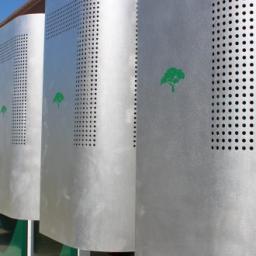High electrical fees lead school districts to install batteries
 Sky-high school electric bills have been in the spotlight this year. More than three dozen San Diego area districts combined forces to press the Public Utilities Commission to deny a large SDG&E rate hike last spring. "In San Diego, really every school is on a high demand rate tariff." The higher costs are known as "demand" charges, and they are unlike the tiered rates familiar to renters and homeowners. The utility pinpoints the single 15-minute period when a school pulls the most electricity, and multiplies that by $41.87 for each kilowatt. This can make for a rather high number when a heat wave spikes air conditioning use, or a cold snap prompts an outbreak of furtive space heaters.
Sky-high school electric bills have been in the spotlight this year. More than three dozen San Diego area districts combined forces to press the Public Utilities Commission to deny a large SDG&E rate hike last spring. "In San Diego, really every school is on a high demand rate tariff." The higher costs are known as "demand" charges, and they are unlike the tiered rates familiar to renters and homeowners. The utility pinpoints the single 15-minute period when a school pulls the most electricity, and multiplies that by $41.87 for each kilowatt. This can make for a rather high number when a heat wave spikes air conditioning use, or a cold snap prompts an outbreak of furtive space heaters.The district is waiting for the state architect's approval to install large blocks of lithium ion batteries at 10 schools in early 2016. The silver-colored columns 8 feet high and 20 feet long will charge up on inexpensive nighttime electricity. Software inside will study each school's habits, relay warnings when use is climbing, and begin feeding battery power toward the school so the school will take less from the electric utility. Green Charge Networks thinks it can save Poway Unified School District some $133,000 its first year and $1.6 million over 10 years. If it doesn't, the school district doesn't pay for the batteries or their installation or maintenance.
http://inewsource.org/2015/11/30/san-diego-sdge-schools-batter-power/
There are pluses and minuses for the supplier handling it, and for the user handling it. The supplier can combine all the individual user peaks, which is a kind of economy of scale. The user handling it himself can put a known bound on peaking expense, whereas the supplier is free to change cost policy at any point.
If it's just an expense amelioration system, the user doesn't have to build his system to five nines reliability, or anything like that. Batteries are batteries. I can believe it would make sense economically for the user to do it.
I guess we'll see.